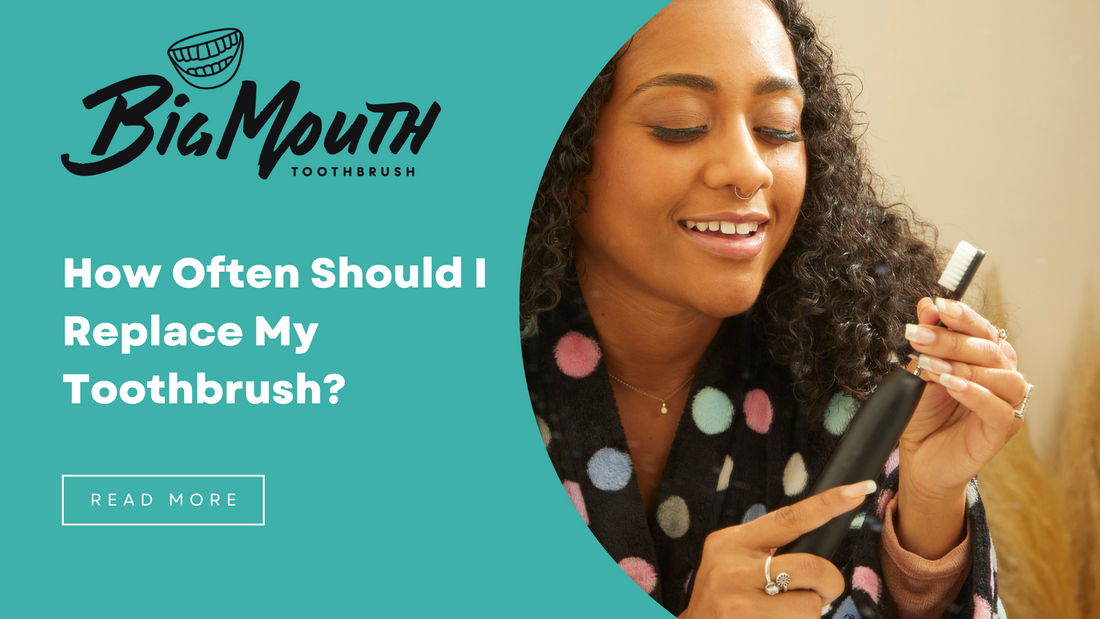A toothbrush is one of the most critical tools in your oral hygiene arsenal. However, to maintain its effectiveness, it’s essential to replace it regularly. But how often should you replace your toothbrush? In this blog post, we’ll explore the recommended frequency for replacing your toothbrush, the reasons behind it, and tips for maintaining a healthy and effective oral care routine.
Why Replacing Your Toothbrush Regularly is Important
- Maintaining Cleaning Efficiency:
Toothbrush bristles wear out over time, becoming frayed and less effective at removing plaque and food particles. A worn-out toothbrush can’t clean your teeth and gums as effectively, increasing the risk of cavities and gum disease.
- Preventing Bacteria Buildup:
Toothbrushes can harbor bacteria, especially if they are not stored properly. Over time, bacteria and germs accumulate on the bristles, which can then be transferred back to your mouth during brushing. Regularly replacing your toothbrush helps minimize this risk.
- Ensuring Gum Health:
Worn bristles can become sharp and abrasive, potentially causing damage to your gums. This can lead to gum irritation, recession, and even infection. Replacing your toothbrush ensures that the bristles remain gentle on your gums.
How Often Should You Replace Your Toothbrush?
The American Dental Association (ADA) recommends replacing your toothbrush every three to four months. However, there are certain situations where you may need to replace it sooner:
- Visible Wear and Tear:
If you notice that the bristles are frayed, bent, or worn out, it’s time to replace your toothbrush, even if it hasn’t been three months yet. A toothbrush in poor condition won’t clean your teeth effectively.
- After Illness:
If you’ve been sick, especially with a contagious illness like the flu or a cold, it’s a good idea to replace your toothbrush once you’ve recovered. This helps prevent the potential reintroduction of bacteria or viruses into your system.
- For Children:
Children tend to brush more vigorously and may chew on their toothbrushes, causing the bristles to wear out more quickly. Check their toothbrushes regularly and replace them every two to three months or sooner if needed.
Tips for Proper Toothbrush Care:
- Rinse Thoroughly:
After brushing, rinse your toothbrush thoroughly under tap water to remove any remaining toothpaste and debris.
- Store Upright:
Store your toothbrush in an upright position, such as in a toothbrush holder, to allow it to air-dry. Avoid keeping it in a closed container, as this can create a moist environment that promotes bacterial growth.
- Avoid Sharing:
Never share your toothbrush with others, even family members. Sharing can transfer bacteria and increase the risk of infections.
- Keep Away from the Toilet:
If you store your toothbrush in the bathroom, keep it as far away from the toilet as possible. Flushing can release bacteria into the air, which can settle on your toothbrush.
Electric Toothbrush Heads:
If you use an electric toothbrush, the same rules apply. Replace the brush head every three to four months, or sooner if the bristles show signs of wear. Follow the manufacturer’s recommendations for your specific model.
Replacing your toothbrush regularly is a simple yet vital step in maintaining optimal oral health. By ensuring your toothbrush is in good condition, you can effectively remove plaque and bacteria, protect your gums, and prevent dental issues. Remember to replace your toothbrush every three to four months, or sooner if needed, and follow proper care tips to keep it clean and effective. A healthy smile starts with the right tools and consistent oral hygiene practices.


